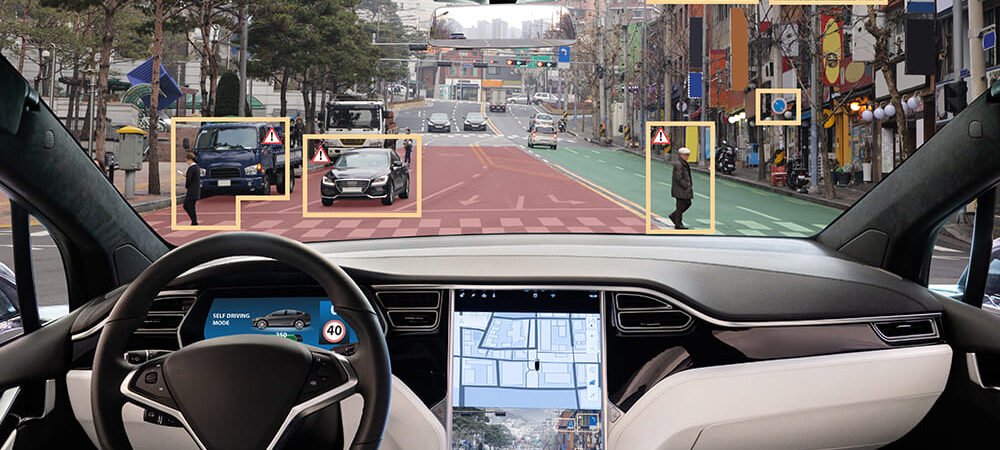How LLMs Are Powering the Future of Self-Driving Cars
Large Language Models (LLMs) are reshaping artificial intelligence across industries — and now they’re driving innovation in self-driving cars. Once built solely on sensors and vision algorithms, autonomous vehicles are gaining a new layer of intelligence: the ability to reason, communicate, and explain decisions much like humans do.
Here’s how LLMs are helping make self-driving cars smarter, safer, and more adaptive to real-world conditions.
🚗 What Are LLMs and Why Do They Matter in Self-Driving Cars?
Large Language Models such as GPT and PaLM are deep-learning systems trained on massive datasets of text, code, and multimodal inputs. While they’re best known for generating human-like language, their contextual reasoning and decision-support capabilities make them ideal companions to traditional self-driving software.
In autonomous vehicles, LLMs act as cognitive copilots — interpreting high-level scenarios, assisting with planning, and explaining the reasoning behind decisions. This helps bridge the gap between machine precision and human understanding.
🧠 1. Smarter Human–Vehicle Communication
One of the most immediate uses of LLMs in self-driving cars is natural language interaction. Passengers can speak naturally, and the car understands not just words but intent.
- “Take me to the nearest EV charger, but avoid toll roads.”
- “Why are we slowing down?”
- “Can you reroute through downtown?”
LLMs interpret, plan, and respond contextually — enabling transparent, conversational AI driving companions that build passenger trust.
🗺️ 2. Better Scenario Reasoning and Decision Support
Traditional autonomous systems rely heavily on rigid rules or trained perception models. LLMs, however, can interpret ambiguous, real-world situations — such as unmarked intersections or temporary construction zones.
“The traffic cones likely indicate lane closure ahead — prepare to merge left.”
This human-like foresight helps cars react safely in unpredictable environments.
🏗️ 3. Accelerating Data Annotation and Simulation
Building self-driving systems requires millions of labeled data points. LLMs streamline this process by automating annotation and generating realistic driving narratives for simulation.
- Describe images or LiDAR frames in natural language.
- Label scenarios (“A cyclist is crossing between parked cars”).
- Generate synthetic driving datasets for AI training.
The result: faster development cycles and more diverse simulation environments.
👁️ 4. Multimodal Understanding for Safer Decisions
Modern LLMs are evolving into multimodal models, capable of processing not just text, but also images, video, radar, and LiDAR. This allows for advanced reasoning, such as:
“The pedestrian on the right seems distracted; slow down preemptively.”
By fusing multiple sensor inputs with contextual reasoning, LLMs enhance perception accuracy and offer explainable AI — giving engineers clear insight into why a car acted a certain way.
🌐 5. Fleet Learning and Continuous Improvement
Imagine every autonomous car sharing experiences with others in the fleet — describing near-misses, unusual weather, or traffic behaviors. LLMs make this possible.
- Summarize massive driving logs.
- Identify patterns and anomalies.
- Suggest improvements across fleets.
This transforms fleet learning from raw data exchange to knowledge exchange, enabling faster system updates and safer autonomous navigation.
⚠️ Challenges and Limitations
Despite the promise, LLM integration comes with challenges:
- Latency: Running large models in real time requires optimized edge hardware.
- Reliability: Language models can “hallucinate” without proper grounding in sensory data.
- Verification: Safety-critical systems must validate LLM outputs before execution.
Research continues to focus on hybrid architectures — combining deterministic control algorithms with language-driven reasoning.
🚀 The Future: Cognitive Vehicles That Understand the World
The next generation of self-driving cars won’t just see — they’ll understand. By combining the sensory precision of computer vision with the contextual reasoning of LLMs, vehicles can anticipate events, explain choices, and learn collaboratively.
As multimodal AI evolves, LLMs could become the brains behind truly autonomous transportation — not only navigating roads, but also understanding the complex, human world around them.
✅ Key Takeaway
Large Language Models aren’t replacing core driving algorithms — they’re enhancing them. By adding reasoning, communication, and explainability, LLMs are transforming self-driving cars into intelligent, trustworthy systems that can drive, think, and converse.

